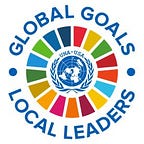Is DC a Sustainable City? SDG 11 in the District
By Jerome Williams, UNA-NCA Research Assistant
Washington DC has seen notable progress in active community engagement efforts toward sustainable development since 2011. Former DC mayor Vincent C. Gray introduced Sustainable DC in 2012, a new initiative encouraging projects and innovative solutions to address the steady increase in the district’s population as well as the threat of climate change. The original plan contained 13 topics, 32 targets, and 143 actions with the overarching goal “to make the District the healthiest, greenest, most livable city in the nation” by the year 2032.
Figure 1 outlines the themes of these ambitious goals, which ranged from ensuring equity and inclusion to improving the quality of the environment through partnerships with local departments, agencies, and organizations. After the first year of the plan’s implementation, renewable energy use increased by 12% across the city, over 9,000 trees were planted, and 62 community gardens opened. The Metropolitan Police Department also equipped 100 police vehicles with anti-idling devices in an effort to reduce gas emissions into the air.
The excitement about DC’s initiative prompted 11 public schools to partner with the Department of General Services to create composting projects. In 2017, the continued investment in sustainable development projects yielded a 24% reduction in DC’s carbon footprint since the year 2006. The District Department of Transportation increased the capacity of bike lanes by 80 miles to improve the walkability of the city and reduce traffic congestion.
These achievements demonstrated a consistent progression towards DC’s vision of sustainability. However, the ever-changing nature of urbanization and the environment encouraged Mayor Muriel Bowser to revise Sustainable DC in order to address new threats and challenges. Sustainable DC 2.0 was released in 2018, and expanded the targets and goals in the city’s original sustainable development plan. The revitalized comprehensive plan contains 4 new targets and 24 new actions. This new plan recognizes equity as an integral pillar in achieving sustainability and prioritizes this by ensuring that demographic changes do not exacerbate existing disparities. DC plans on addressing the challenge of social inequity by ensuring that both poor and communities of color benefit from urban development projects and are included in economic improvements.
The UN’s SDG 11: Sustainable Cities and Communities places an emphasis on inclusivity in target 11.3, intended to“enhance inclusive and sustainable urbanization and capacity for participatory, integrated and sustainable human settlement”. However, this broad definition does not include a quantifiable method of measuring progress. Sustainable DC 2.0 seeks to mitigate this shortcoming in its featuring of meaningful inclusivity through the target areas of “Equity” and “Built Environment”.
Targets for “Equity” included developing “an equity assessment tool” while also focusing on community engagement in minority communities. DC’s city council will implement these targets through the Racial Equity Achieves Results Act or the REACH Act. The REACH Act, passed in July 2020, will establish an Office of Racial Equity, which is tasked to implement the equity tool in the city’s agencies, programs, and budgets by March 2021. The goals for “Built Environment” are geared towards expanding and enhancing affordable housing options in response to the city’s population growth in effort to also reduce inequality.
White households have 81 times more wealth than black households across DC, and the wealth gap along racial lines continues to grow, posing further challenges to ensuring equity for all. According to the Brookings Institution Metro Monitor 2019 report, DC is one of the worst-performing metropolitan regions in the US in regards racial equity. Figure 2 displays the median incomes of people of color and white people in DC from 2007 to 2017.
The nation’s capital, the central authority for governance on many national and international affairs, has the power to lead the world. Climate Mayors and C40 are organizations committed to achieving the goals of the Paris Climate Agreement. As a member of both entities, DC’s actions carry weight on the global stage. Policies and initiatives implemented to “lead the way towards a healthier and more sustainable future” would influence governments around the world to follow suit. DC’s new commitment to attaining social equity would also encourage nations to ensure that all of their institutions are inclusive.
Washington DC’s commitment to community engagement and partnerships is advancing progress towards environmental sustainability. Achieving sustainability is a vital effort that must be continuously refined in order to adapt to shifting environmental, economic, and social changes. Prioritizing the health and inclusion of all residents is key to making “the District the healthiest, greenest, most livable city in the nation”.
